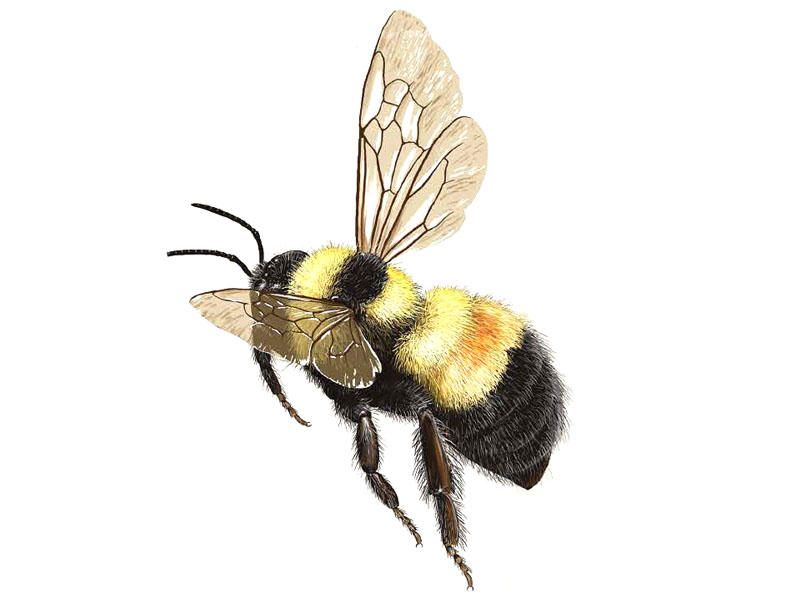The first time Clay Bolt saw the rusty patched bumblebee was in the invertebrate collection at Great Smoky Mountains National Park. The nature photographer was being shown around the collection by a park entomologist, who led him to a pinned specimen of Bombus affinis, no bigger than the tip of your thumb. The bee looked similar to others Bolt had seen as part of his project to photograph native bees, except for an amber-colored patch on its second abdominal section. Yet he was immediately drawn to its plight. This fuzzy little species, which previously spanned 27 states and parts of Canada, was once an important pollinator of apple orchards and other crops. But since the 1990s, the bee’s population had declined by a steep 87 percent. Despite several attempts to locate it, the bee had not been spotted in the park for years, said the entomologist. Bolt's thoughts went to the stuffed passenger pigeon displayed in the same hall—a species that once numbered in the billions, but went extinct in the early 20th century.
Read more: http://www.smithsonianmag.com/science-nature/bee-that-breaks-your-heart…
Give the gift of Smithsonian magazine for only $12! http://bit.ly/1cGUiGv
Follow us: @SmithsonianMag on Twitter

- Login om te reageren
